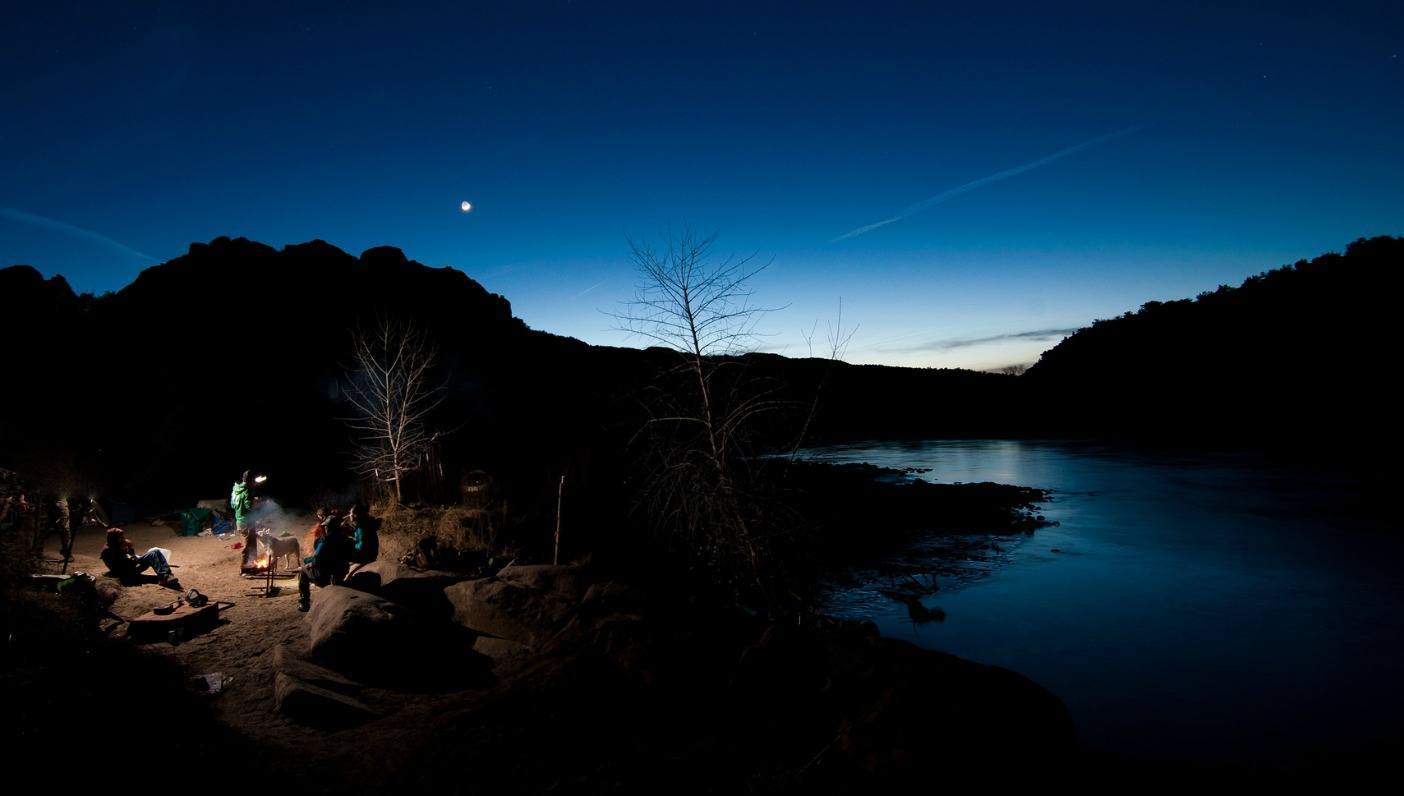
Hiking is just one activity you can try at a Wanderlust Festival. Join us this summer!
Many of the stars that we can see at night have Arabic names: Algol in the constellation Perseus, Aldebaran in Taurus, Alcor in the tail of Ursa Major, the Great Bear, or Big Dipper. The Arabians were great astronomers, for no small part because the heat of the day forced many desert-dwellers to travel only at night. They developed an intimate relationship with the moon and the stars as their source of light, and as their navigation aids.
There is something very magical about hiking at night—using the moon as a light source as it reflects some 3–12 percent of the sun’s rays. Without the heavy traffic we often find on our trails during the day, we get to experience the forest or mountain or meadow in stillness and in peace. Our senses become heightened—our eyes are forced to adjust to the lower light, and our ears search out sounds in the silence.
As we peer into the darkness, or are met with an unfamiliar noise, our imagination rushes to fill in the gaps. Is that a tree, or is it an old, cloaked woman? Was that sound really just a mouse? Or a mountain lion? Stories begin to emerge.
In the foreign and unfamiliar nighttime landscape we find ourselves confronted with our fears, and in the quiet we are given the opportunity to embrace them, and to relax. Instead we can turn our attention to marvel at the secret world of nature we miss when we are tucked in bed. This is the domain of the owl, the bat, the spider, the possum, the moth, and the red-eyed tree frog. It’s the kingdom of the night-blooming flowers—the evening primrose, the moon flower, the night-blooming water lily, and the fragrant nicotiana. In darkness, there is also beauty.
On our night hikes, we obtain a new perspective on the things that have become overly familiar in our daily lives. In the hues of gray, black, and blue, the moon’s silvery light bounces off leaves and tree-trunks, giving us a chance to experience the world we know in near monochrome.
And then there is the moon herself—our only satellite—helping to keep our planet in consistent rotation from 238,900 miles away, dictating our ocean tides and, even, says some studies, the movement of plant leaves.
As we take a moment in our hike to raise our eyes up skywards, and bathe in her moonbeams, we are reminded that we are on a planet hurtling around a star, and how wonderful this planet is. So join with your tribe, walk beneath the full moon (there’s one coming up May 21!), and fall in love with nature all over again.
5 Tips for Your Full Moon Hike
1. Keep it safe.
It’s wise to begin your night hike experience with a guide. Full moon hikes have gained popularity in recent years and most state parks will offer a guided group night hike at least once a year. If you do opt out of using a guide, hike in numbers, pick a familiar trail, and let people know where you are going, and when to expect you back.
2. Pay attention to wildlife warnings.
Bears and mountain lions are no joke, so check for wildlife warnings before you set out. Some parks don’t allow night hikes for this very reason. Respect warnings and don’t take any chances.
3. Take a light.
Headlamps are ideal lights for night hikes—but try not to use them. Using a light will prevent your eyes from adjusting to the dark and fully utilizing the light of the lovely full moon. It’s also bad night-hike etiquette to be blinding your fellow hikers with your beam. However, small flashlights and headlamps will come in handy if the moon goes behind a cloud, for particularly shaded areas, and also for reading maps, so it’s smart to carry one one along. Just don’t forget to bring extra batteries.
4. Wear layers.
While you might start off your hike during a warm sunset, the temperature is going to drop at night—particularly if you are hiking an elevated trail. Layers will become your best friend as the outside temperature changes. Take a peek at the night’s forecast and be sure to wear appropriate footwear (Traction is your friend—and cover those toes!) as well.
5. Take it slow.
With restricted light it’s easy to miss that tree root or rock ahead that could send you flying, so step slowly and carefully. You’re also hiking to experience the quiet, the wonder, and magic of observing what nature does while you are normally inside or sleeping. Night hikes aren’t meant to be as active as day hikes, so slow down, and stop frequently to take it all in and bathe in the moonlight. You can also pause and try out this full moon yoga sequence when you need a break in your journey.
—

Helen Avery is a senior writer for Wanderlust Media. She is also a journalist, writer, yoga teacher, minister, and full-time dog walker of Millie, residing in Brooklyn, New York. You can find out more about her on her website, Life as Love.
